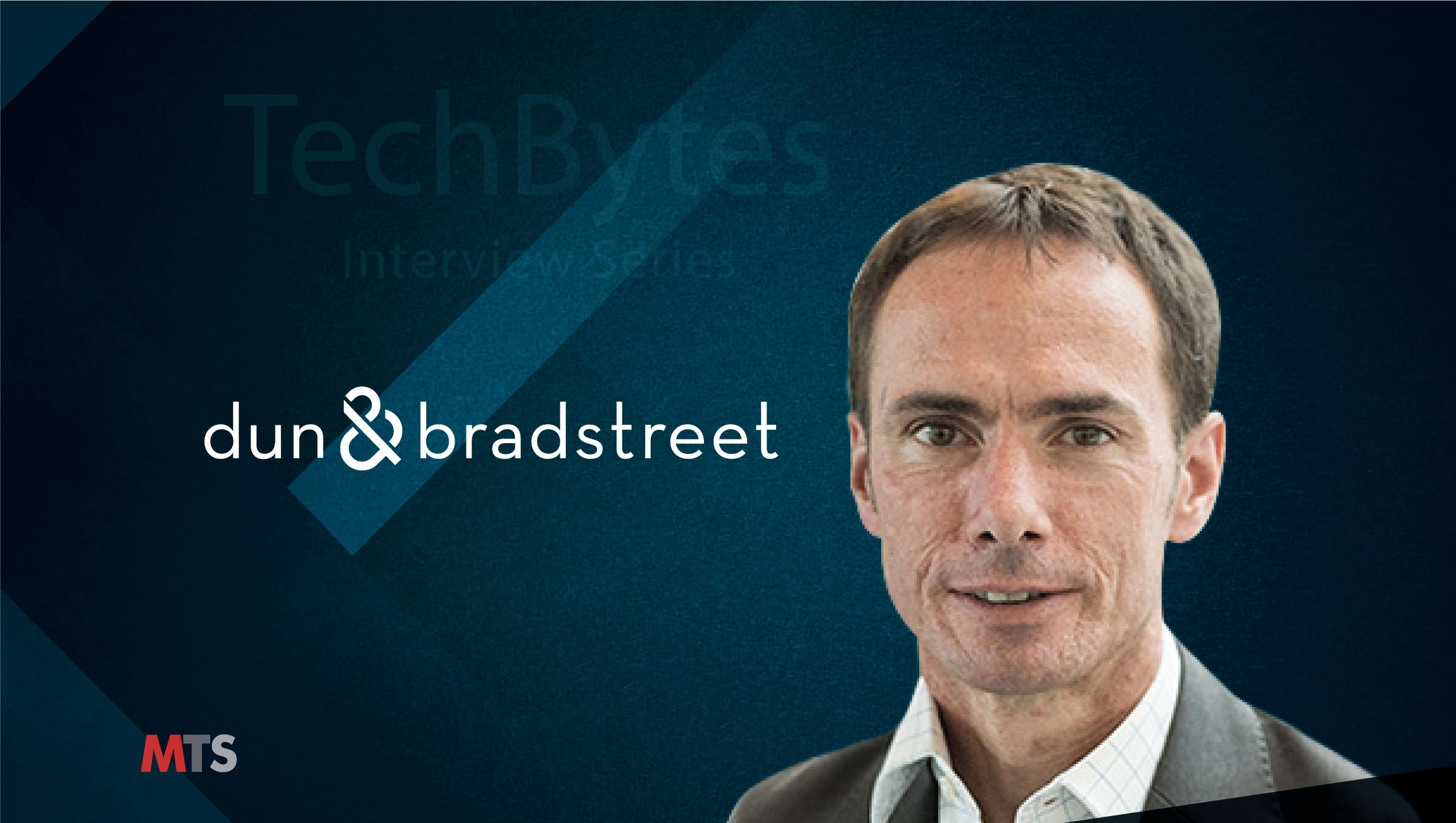Journey into Tech
Hi Adam, tell us about your role and the team/technology you handle at Dun & Bradstreet.
My role is to identify ways for our clients to use Dun & Bradstreet’s global commercial data and analytics to support decisions and enhance their Sales and Marketing activities.
This means helping companies realize the maximum value of their own data to gain commercial advantage rather than ‘just holding it’. In order to achieve that, the right software and solutions are needed to identify and activate the most appropriate data at the most relevant time.
At Dun & Bradstreet, which Marketing, Sales and Communication tools do you work with?
We use Salesforce and Marketo as well as Dun & Bradstreet’s own suite of solutions including D&B Lattice to manage our customer data, D&B Hoovers for Sales acceleration and D&B Optimizer to cleanse and enrich data to enable actionable insights.
The Data Mining and Wrangling industry is a disruptive ecosystem. How do you analyze your product’s viability and its acceptance among customers?
One of the things we hear most frequently from our customers is that they need to demonstrate a financial return to secure investment in data and analytics. We are always looking at ways we can help them to gain senior-level support and evidence the meaningful value data can deliver for their business.
For example, we recently developed and launched a Return on Investment (ROI) Calculator to help our customers articulate the benefit of investment in data on an organization’s turnover and show the viability of MarTech solutions. This tool is available free of charge on our website and allows organizations to obtain ROI analysis on up to four of 25 categories that are most relevant to their business.
Customers and prospects are invited to input their data into the online calculator, which then provides ROI estimates that can be used to support business cases by articulating the benefit of investment in data on an organization’s turnover.
How has your recent acquisition of Lattice Engines helped strengthen your AI Analytics and Sales Intelligence platform?
Good decisions based on poor data are just poor decisions you don’t know about yet, and even if you place your very best analyst on the task or use the very best Artificial Intelligence (AI) analytics, poor data will always result in a suboptimal decision. Our D&B Lattice solution provides two main benefits for our clients:
– D&B Lattice enables data from disparate sources e.g. Customer Relationship Management (CRM), Web analytics, Enterprise Resource Planning (ERP), etc. to be connected together and enables a 360-degree view of each customer. D&B Lattice crucially connects and pre-prepares data from various sources and presents this as a single unified source. AI can then be used to drive the best segmentation and optimize audience creation – be that within or outside the D&B Lattice solution.
– Activating that AI Analytics to gain the best returns: Marketers have a variety of channels through which they can engage with their buyers (as new channels come online on a regular basis) A Customer Data Platform such as D&B Lattice enables deployment of AI analytics across all channels utilized and also shares the campaign audience results to gain the best returns.
How do data privacy policies like GDPR (in Europe) and CCPA (California Consumer Protection Act) impact Marketing and Sales solutions? How do you cope with these regional challenges?
We have a global team of privacy experts who review forthcoming legislation and carry out any necessary remediation at a global level to ensure the data we license is legally compliant for local markets. Because of our expertise, privacy legislation has not reduced our volume of data, but we have strengthened data subject rights over the data.
Using a reliable data supplier with expert knowledge is half the battle in ensuring all privacy legislation is met. The other half is ensuring your own company then knows how to maintain and handle the data it receives. Companies that are sourcing data responsibly and using it in an ethical way have nothing to fear from privacy legislation.
Tell us how to optimize AI in Sales to grow a business. What are the various ways you enable customers can create compelling Sales pipelines?
Businesses are increasingly addressing Modern Marketing challenges by adopting Account-Based Marketing (ABM) strategies to accelerate revenue. ABM works because it aligns Sales and Marketing priorities, relies on a heavily personalized approach (personalized content delivers 5-8 x ROI on Marketing spend and can lift Sales by 10%), and applies not only to converting new customers, but also developing existing customers. Artificial Intelligence can help businesses scale their ABM campaigns by:
– Giving them a 360-degree view of their prospects and customers, which powers better segmentation and more tailored content
– Enabling Big Data processing and Machine Learning, which allows businesses to build predictive models to target high-value customers.
– Operationalizing insights, providing real-time availability of scores and insights that allow businesses to deliver the right message to a prospect at the appropriate time in their buying journey.
When you look back into the past, which Sales platforms and tools do you really miss having or working with?
My previous roles were very focused on Consumer Marketing where there was both relative simplicity in single customer view (due to lack of corporate hierarchy) and an abundance of segmentation data. After four years in the B2B world, it is apparent just how quickly B2B is closing the gap with very strong entry-level corporate hierarchy solutions, increased ability to use vast segmentation data and, importantly, to get this fully integrated into digital offerings.
But without question the one solution I still miss is the black box analytical models (I always described them as digital cameras with fully defaulted settings but with an ability to over-ride) – way too many campaigns, both very small and very large, are still determined on overly basic manual selections. This has to change fast and the vendors need to help drive this. And for the analysts out there, these drive demand for bespoke advanced AI – they’re the taster that wets the appetite.
One epic moment from the decade (2011-2019) that changed your outlook into AI/Marketing and Sales tech landscape?
It’s been more evolution than revolution over this time period but to place a stake (or two) in the ground I’d suggest the following:
– Having vendor data natively available within leading software – removing the implementation hurdle of the ever-familiar ‘lack of technical resource’ – the largest barrier to utilization
– Auto-population: Back in 2000 this was first introduced and as individual consumers, we were able to write our postcode and select our house number/name from the drop-down list.
However, it’s only in the last few years has this become a standard B2B offering for web visitors via entering their company name, email address or even IP address identification. It’s still in its infancy for B2B and more sites don’t than do have this activated – but it’s there and it works in a 300th of a second, so let the show begin!
What are your predictions for your industry and technology markets for 2020-2024?
The volume of data is growing faster than ever before, but it’s not just finding and storing the data, it’s making commercial use of the data that counts, and according to our own survey of Marketing professionals, 50% do not have faith in their own data. This is changing fast and – like electric cars – I suspect the foundation has been built and the next few years will be about the effective utilization of data in the digital and online world.
By 2024, companies will be behind if they are not identifying the majority of online visitors, serving up personalized, individual content and an integrated and tailored Account-Based Marketing (ABM) approach. This, in turn, adjusts the role of Sales, who will be speaking to better-informed prospects.
Sales teams will need access to effective tools such as CDPs to support ABM at scale and provide real-time data on prospects to avoid frustrating the buyer with questions they should already know the answer to. Data will be key to fine-tuning their understanding of the clients and how their solution can provide true differentiating elements to meet a specific use case.
Adam is a European Sales & Marketing Solutions Leader at Dun & Bradstreet.
He is a specialist in the commercialization of data across multiple verticals including Credit risk, Credit customer management, Insurance, Assurance and Home shopping. Undertaken in UK and International markets for offline and online solutions using both consented structured data or big data.
Specialties: strategy, proposition development, innovation, data insight, sales management, new business development, solution sales.Adam
Dun & Bradstreet data and insights help improve your business performance. Delivered through the Dun & Bradstreet Data Cloud and our market-leading solutions, our data and insights help you accelerate revenue, manage risk, lower cost and transform your business. Global businesses of all sizes rely on our data, insight & analytics.












